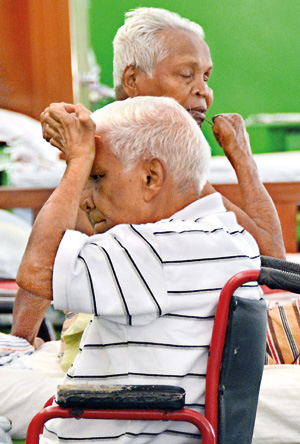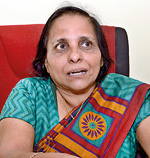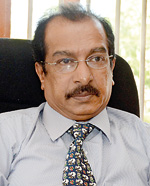News
Don’t panic, but fight leprosy
Four weeks after the world marked International Leprosy Day, a Sri Lankan doctor says that although the oldest recorded disease in the world does not create panic now, it is far from being eradicated with at least 2,000 new cases being reported every year in the past decade in Sri Lanka.

Edward Alwis: The oldest inmate in the hospital. Pix by M.D. Nissanka
Sri Lanka’s Anti-Leprosy Campaign Director, Dr. M.L.S.N Fernando, says 40 percent of the recorded cases are from the Colombo district and among the patients were children who were in the age groups of 6-12. “The Public has a perception that leprosy has been eradicated but that is not the case,” she said adding that the time had come for a fresh campaign to raise awareness of the disease, especially among the youth.
Dr. Fernando said they were planning to conduct education programmes in schools countrywide while they will also send health officials to houses to give the message that leprosy can only be identified through symptoms. She said leprosy was once thought to be contagious but now with early inspection and medicine, it could be healed within six months of medication in the comfort of one’s home.
She said the basic symptoms were red or white patches in the skin and immediate treatment should be sought if such skin conditions developed. “All skin illnesses bring complications but bacteria-borne leprosy affects nerves and causes numbness and wounds which, if not treated properly, could lead to amputation of digits,” Dr. Fernando said.
However, she said such critical cases were rare now because of the availability of medicine. Leprosy was a disease people feared most from ancient times. Patients were separated from society and shunned but with the advancement of medical science, no patient was being ostracized, Dr. Fernando said, adding that the Health Ministry did not recommend in-house treatment for leprosy now.
However, some 36 patients are still in the Leprosy Hospital in Wattala even though they have been fully cured. This was because they have no place to go. Dr. Jayalath Chandrasiri, the officer in charge of the hospital, said these patients were being treated at the hospital for other complications.

Dr. M.L.S.N Fernando
He said some patients had lived their lifetime in isolation but they had been given the best treatment. He explained that the hospital earlier had 950 admissions and 400 employees and this had now reduced to 36 patients, 45 employees and three doctors.
He said most of the patients were satisfied with the treatment and had resolved to spend the rest of their lives in the hospital though some patients who had lost their sense of taste were unhappy of the meals.
Some of these patients who spoke to the Sunday Times said they wanted to tell the world that leprosy was not as dreaded a disease as it used to be and it could be cured with proper medication. They also appealed that no one suffering from leprosy should be isolated or ostracized.
Among those who made this appeal was 88-year-old Edward Alwis, the oldest inmate at the hospital. He was brought to the hospital in 1943 when he was 14. Completely cured, he recalled how frightened the people were when they saw a leper decades ago. He said he had seen patients with horrific conditions. They were desperate to get back to society and lead a normal life but forced to stay in hospital even after they were cured because society was not ready to accept them back.
Mr. Alwis said his family members visited him regularly in the early days of his affliction though society was cruel to him.
“Leprosy is curable but people keep away from us and forget that we too are human. It appears that nothing invokes more fear among the people than the three-letter Sinhala word — La-du-ru.”

Dr. Jayalath Chandrasiri
Sixty-eight-year-old Pediyagani Gunawathi said she had been living in the hospital for a long time, though she was completely cured of the disease. She said she had much free time during which she made use of her knowledge in wool craft to make various items.
She said she was grateful to the Government for providing people like her a place to live and appealed to the people at large to welcome them back to society. “It is not our fault that we fell sick. We were kicked out from schools, homes and our villages. But today no leprosy patient has to go through this trauma because leprosy can be cured.”
She said her advice to people was that they should seek immediate treatment no sooner they spot a red or white patch on the skin.


